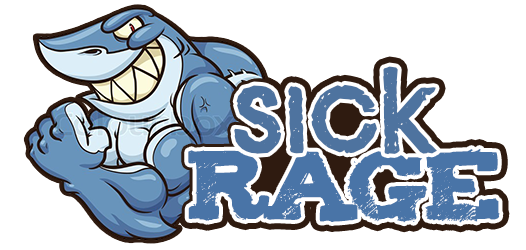The LinuxServer.io team brings you another container release featuring :-
- regular and timely application updates
- easy user mappings (PGID, PUID)
- custom base image with s6 overlay
- weekly base OS updates with common layers across the entire LinuxServer.io ecosystem to minimise space usage, down time and bandwidth
- regular security updates
Find us at:
- Discord - realtime support / chat with the community and the team.
- IRC - on freenode at
#linuxserver.io. Our primary support channel is Discord. - Blog - all the things you can do with our containers including How-To guides, opinions and much more!
Sickrage has been deprecated. Please use linuxserver/sickchill instead
Our images support multiple architectures such as x86-64, arm64 and armhf. We utilise the docker manifest for multi-platform awareness. More information is available from docker here and our announcement here.
Simply pulling linuxserver/sickrage should retrieve the correct image for your arch, but you can also pull specific arch images via tags.
The architectures supported by this image are:
| Architecture | Tag |
|---|---|
| x86-64 | amd64-latest |
| arm64 | arm64v8-latest |
| armhf | arm32v7-latest |
Here are some example snippets to help you get started creating a container.
docker create \
--name=sickrage \
-e PUID=1000 \
-e PGID=1000 \
-e TZ=Europe/London \
-p 8081:8081 \
-v </path/to/appdata/config>:/config \
-v </path/to/downloads>:/downloads \
-v </path/to/tv/shows>:/tv \
--restart unless-stopped \
linuxserver/sickrage
Compatible with docker-compose v2 schemas.
---
version: "2"
services:
sickrage:
image: linuxserver/sickrage
container_name: sickrage
environment:
- PUID=1000
- PGID=1000
- TZ=Europe/London
volumes:
- </path/to/appdata/config>:/config
- </path/to/downloads>:/downloads
- </path/to/tv/shows>:/tv
ports:
- 8081:8081
restart: unless-stopped
Container images are configured using parameters passed at runtime (such as those above). These parameters are separated by a colon and indicate <external>:<internal> respectively. For example, -p 8080:80 would expose port 80 from inside the container to be accessible from the host's IP on port 8080 outside the container.
| Parameter | Function |
|---|---|
-p 8081 |
Application WebUI |
-e PUID=1000 |
for UserID - see below for explanation |
-e PGID=1000 |
for GroupID - see below for explanation |
-e TZ=Europe/London |
Specify a timezone to use EG Europe/London. |
-v /config |
Configuration files. |
-v /downloads |
ISOs. |
-v /tv |
TV library directory. |
When using volumes (-v flags) permissions issues can arise between the host OS and the container, we avoid this issue by allowing you to specify the user PUID and group PGID.
Ensure any volume directories on the host are owned by the same user you specify and any permissions issues will vanish like magic.
In this instance PUID=1000 and PGID=1000, to find yours use id user as below:
$ id username
uid=1000(dockeruser) gid=1000(dockergroup) groups=1000(dockergroup)
Web interface is at <your ip>:8081 , set paths for downloads, tv-shows to match docker mappings via the webui.
- Shell access whilst the container is running:
docker exec -it sickrage /bin/bash - To monitor the logs of the container in realtime:
docker logs -f sickrage - container version number
docker inspect -f '{{ index .Config.Labels "build_version" }}' sickrage
- image version number
docker inspect -f '{{ index .Config.Labels "build_version" }}' linuxserver/sickrage
Most of our images are static, versioned, and require an image update and container recreation to update the app inside. With some exceptions (ie. nextcloud, plex), we do not recommend or support updating apps inside the container. Please consult the Application Setup section above to see if it is recommended for the image.
Below are the instructions for updating containers:
- Update the image:
docker pull linuxserver/sickrage - Stop the running container:
docker stop sickrage - Delete the container:
docker rm sickrage - Recreate a new container with the same docker create parameters as instructed above (if mapped correctly to a host folder, your
/configfolder and settings will be preserved) - Start the new container:
docker start sickrage - You can also remove the old dangling images:
docker image prune
- Update all images:
docker-compose pull- or update a single image:
docker-compose pull sickrage
- or update a single image:
- Let compose update all containers as necessary:
docker-compose up -d- or update a single container:
docker-compose up -d sickrage
- or update a single container:
- You can also remove the old dangling images:
docker image prune
- Pull the latest image at its tag and replace it with the same env variables in one run:
docker run --rm \ -v /var/run/docker.sock:/var/run/docker.sock \ containrrr/watchtower \ --run-once sickrage - You can also remove the old dangling images:
docker image prune
If you want to make local modifications to these images for development purposes or just to customize the logic:
git clone https://github.com/linuxserver/docker-sickrage.git
cd docker-sickrage
docker build \
--no-cache \
--pull \
-t linuxserver/sickrage:latest .
The ARM variants can be built on x86_64 hardware using multiarch/qemu-user-static
docker run --rm --privileged multiarch/qemu-user-static:register --reset
Once registered you can define the dockerfile to use with -f Dockerfile.aarch64.
- 23.03.19: - Switching to new Base images, shift to arm32v7 tag.
- 22.02.19: - Rebasing to alpine 3.9.
- 16.01.19: - Add pipeline logic and multi arch.
- 09.08.18: - Change repository to Sick-Rage
- 17.08.18: - Rebase to alpine 3.8.
- 20.03.18: - In lieu of a definite fix from SR, add nodejs package for use with torrentz and other sources.
- 12.12.17: - Rebase to alpine 3.7.
- 06.08.17: - Internal git pull instead of at runtime.
- 25.05.17: - Rebase to alpine 3.6.
- 07.02.17: - Rebase to alpine 3.5.
- 14.10.16: - Add version layer information.
- 30.09.16: - Fix umask.
- 09.09.16: - Add layer badges to README.
- 28.08.16: - Add badges to README.
- 08.08.16: - Rebase to alpine linux.
- 30.12.15: - Build later version of unrar from source, removed uneeded mako package.
- 20.11.15: - Updated to new repo, by SickRage Team.
- 15.10.15: - Initial Release.






